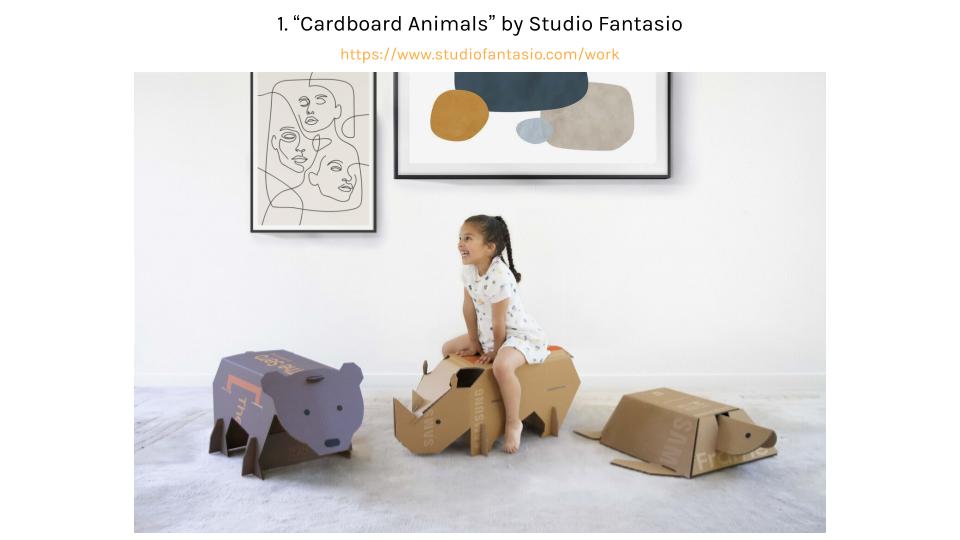
Zita: “When we talk about cardboard as a material for designing it’s essential to mention recycling. These animal toys are a great example of renewing the function of packaging which we would never be used again in its old form.”
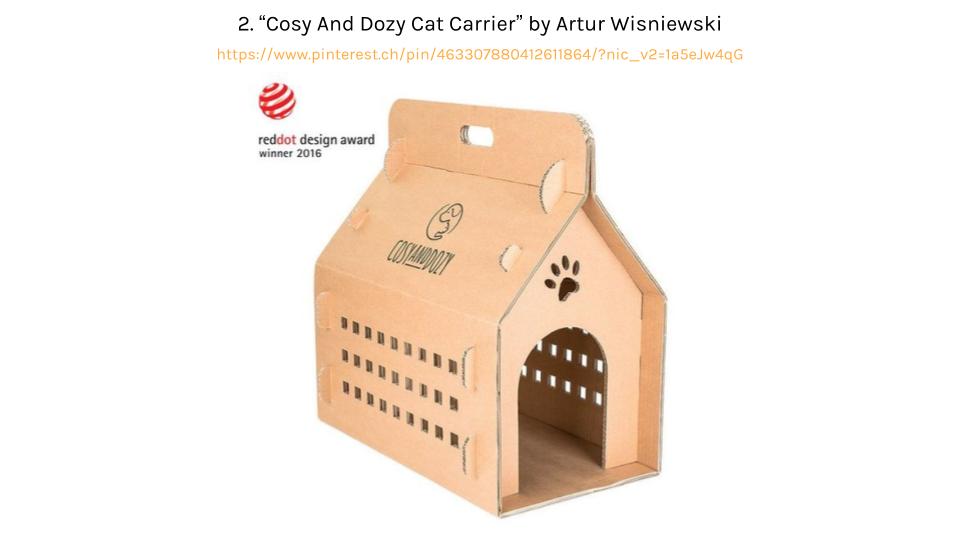
Zita: “Cardboard won its worthy place in product design when this cat house won a Red Dot Design Award in 2016. The material works perfectly well as a house for cats, proving that there is compromise between good design and recycling.”
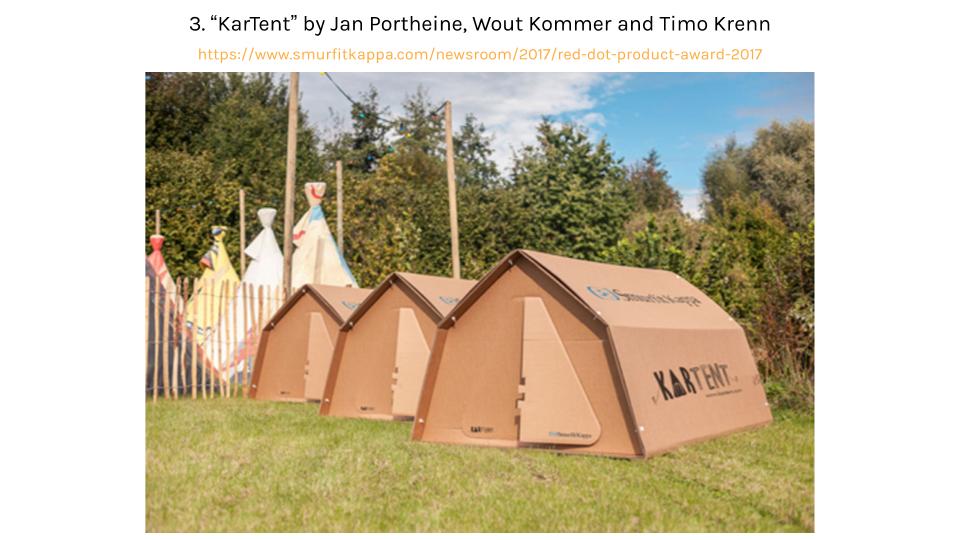
These tents are fully made of cardboard and are a perfect example of how design can break our expectations as they can hold 400% of their weight in water and are therefore waterproof and fully functional.
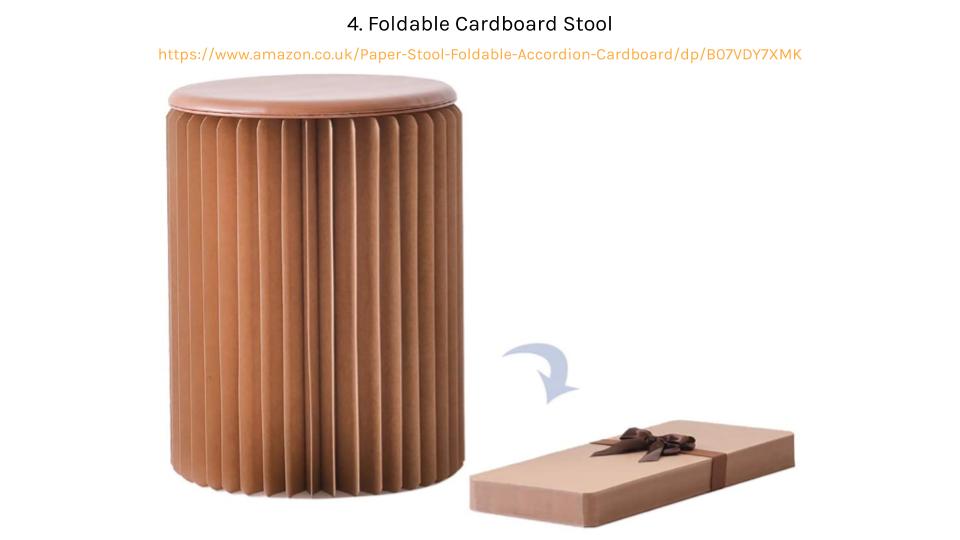
This stool uses the original idea of corrugated cardboard for solidity, whilst also taking advantage of this idea to make it modular and more transportable, which is advantaged by the low weight of the material.
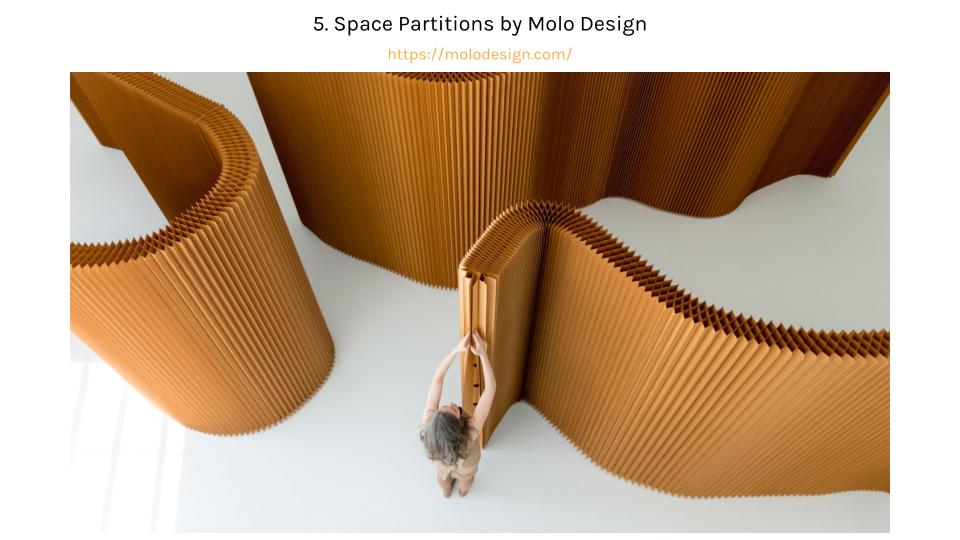
These modular separation panels apply the same idea as the stool but on a bigger, more architectural scale. This design is advantaged once again by the materials light weight and flexibility.
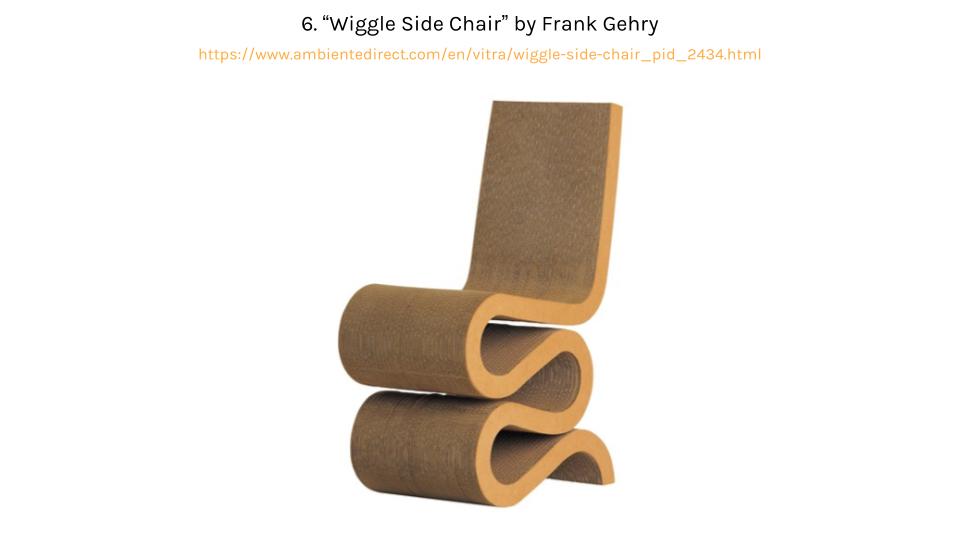
This is a very early example of cardboard being used in design, created in 1972, at a time where manufacturers were starting to look for alternatives to plastic.
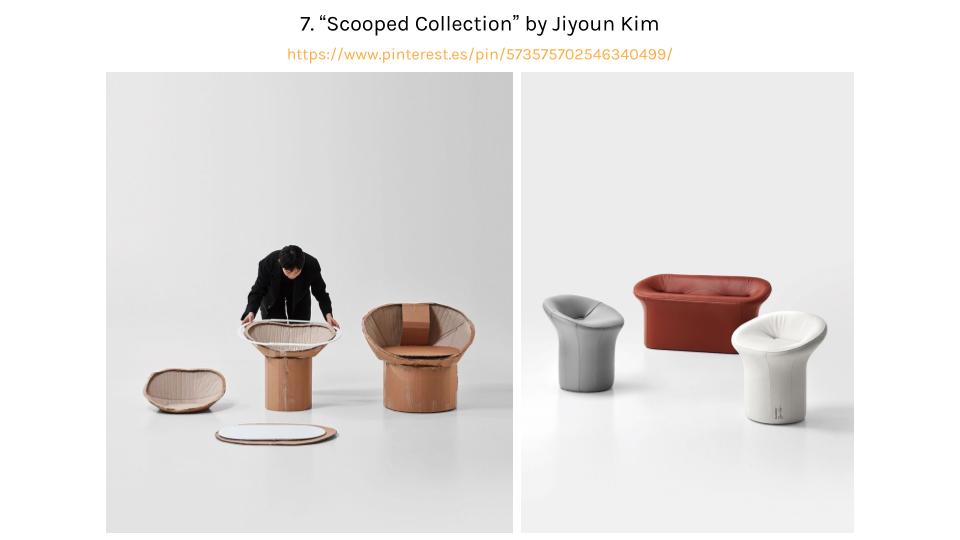
What’s interesting in this case is cardboard is used as any other material, not put forward as a main feature. This could be foreshadowing cardboard becoming more of a mainstream material in this kind of design.
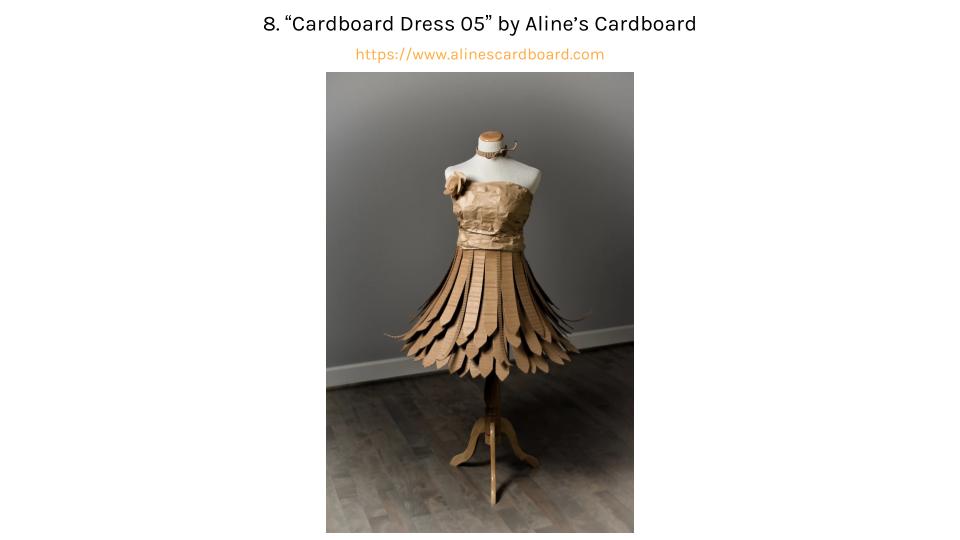
Zita: “Not only in product design but in fashion design cardboard appears. In this area it’s obviously works as a piece of art where the dress embraces the unique features of the material.”
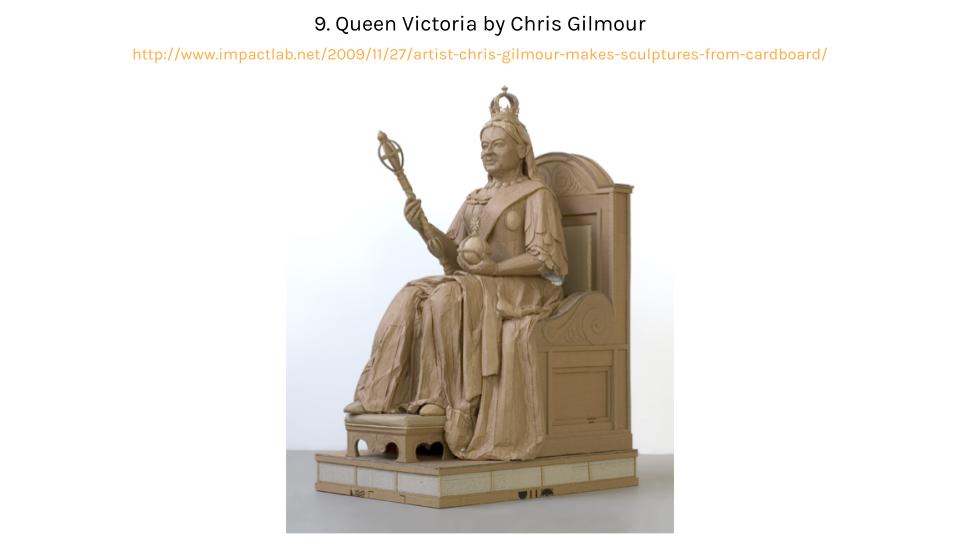
Zita: “In contrast with all the others previously cardboard is just as able to express gentle forms as being a constructive, robust building material. This ability makes it possible to stand its place in lifelike sculpturing as well.”
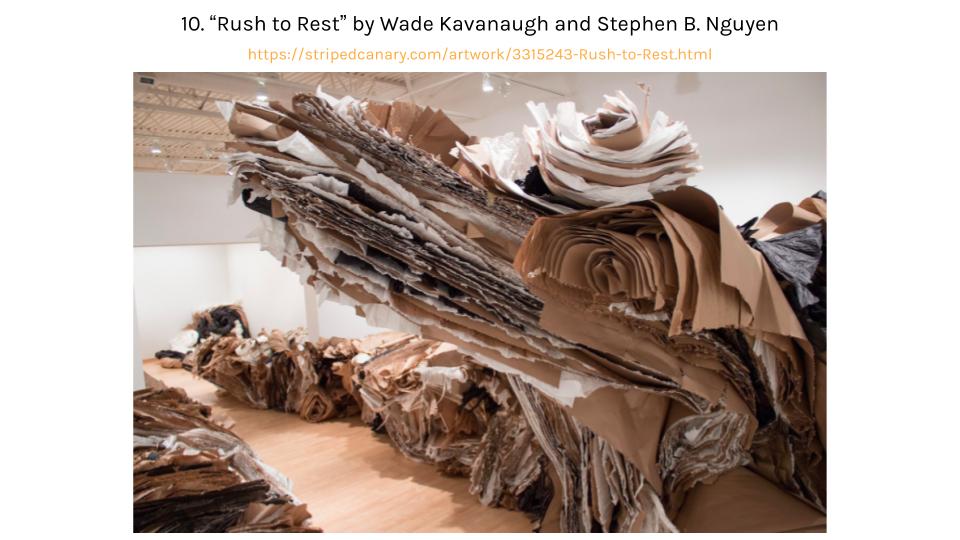
Zita: “Lastly, interestingly recycling appears in fine arts as well. In this wave-like huge installation we can see the rough unfinished side of cardboard and paper. The versatility of cardboard as a material is truly amazing.”



